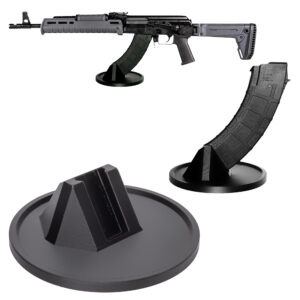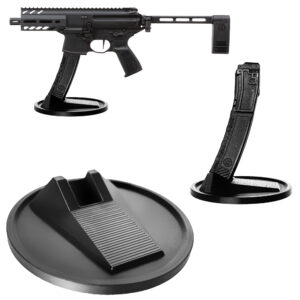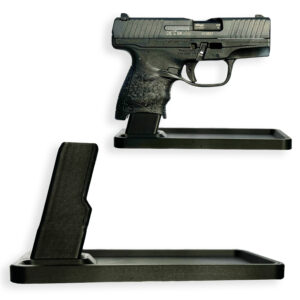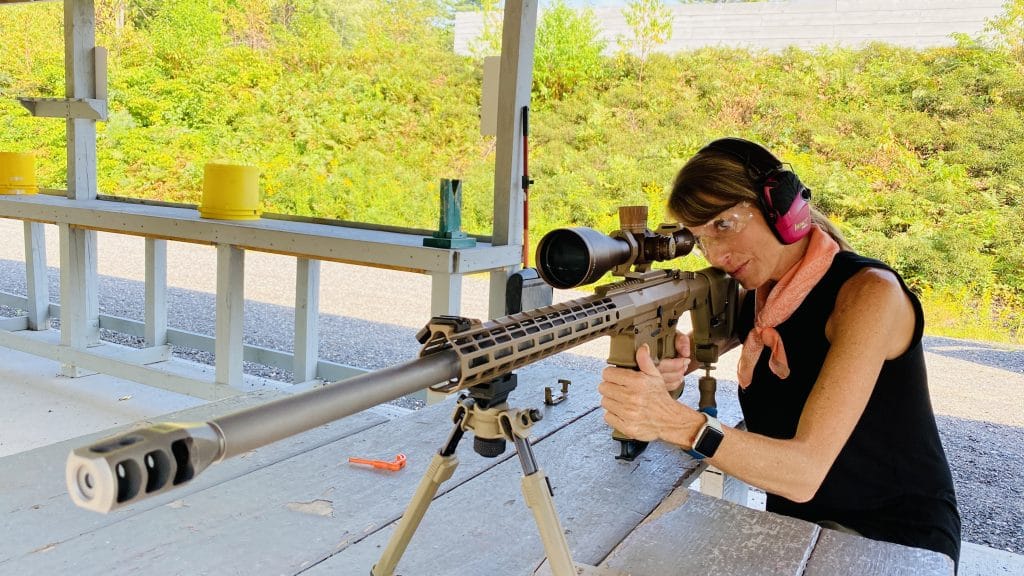Introduction To Best Practices For Transporting Guns
Transporting firearms requires careful attention to safety and legal considerations. Whether you are an avid hunter, competitive shooter, or simply a responsible gun owner, understanding the best practices for transporting firearms is essential. This guide aims to provide you with comprehensive knowledge and guidance on how to transport firearms safely and in compliance with the law.
The transportation of firearms is subject to various regulations that vary from country to country, state to state, and even city to city. Navigating these regulations can be complex and confusing, but it is crucial to ensure that you remain compliant at all times. Violations of these laws can result in serious legal consequences and compromise public safety.
To help you navigate this intricate landscape, we will explore a range of topics related to transporting firearms securely. We will discuss important considerations such as proper storage during transportation, securing your firearm within a vehicle, complying with local laws regarding ammunition transportation, and understanding the necessary documentation required when traveling across different jurisdictions.
Moreover, we will delve into the critical topic of firearm safety during transport. Accidental discharges or unauthorized access can have severe consequences. Therefore, we will highlight best practices for securing your firearm in transit and provide tips for preventing theft or misuse.
By familiarizing yourself with these best practices for transporting firearms safely and legally, you can confidently travel with your firearm while minimizing risks and adhering to all applicable laws.
Understanding Legal Requirements For Transporting Guns
Transporting firearms requires a thorough understanding of the legal requirements to ensure compliance with local, state, and federal laws. Failure to adhere to these regulations can result in serious consequences, including criminal charges and the loss of your firearms. Therefore, it is crucial to familiarize yourself with the following key considerations when transporting firearms.
Firstly, it is essential to research and understand the specific laws governing firearm transportation in your jurisdiction. These laws can vary significantly from one place to another, covering aspects such as carrying loaded or unloaded firearms, storing ammunition separately from firearms, or requirements for transporting firearms in a vehicle.
Secondly, knowledge of permit requirements is paramount. Some states may require individuals to possess a valid concealed carry permit or a specific transport license when moving firearms outside their home or workplace. Researching and obtaining the necessary permits will ensure you are complying with local regulations.
Additionally, proper storage and securing of firearms during transport are vital. Many jurisdictions have strict guidelines on how firearms should be stored while being transported in vehicles. Typically, this involves placing them in a locked container separate from ammunition or ensuring they are securely encased within a vehicle’s trunk.
Lastly, awareness of reciprocity agreements between states is crucial if you plan on crossing state lines with your firearm. Reciprocity refers to an agreement between jurisdictions recognizing each other’s permits or licenses. Understanding which states recognize your permit will help prevent potential legal issues during interstate travel.
By comprehending these legal requirements thoroughly and ensuring compliance at all times while transporting firearms, individuals can avoid unnecessary legal complications and maintain their rights responsibly and safely.
Ensuring Proper Gun Storage And Security During Transportation
Transporting firearms, whether for hunting, sport shooting, or personal protection, requires careful adherence to best practices to ensure both safety and compliance with local laws. Proper storage and security measures are essential to prevent accidents, thefts, or unauthorized access. Here are some guidelines to follow when transporting firearms:
1. Secure Storage: Guns should be stored unloaded in a locked container during transportation. The container can be a dedicated gun case, lockable bag, or a safe specifically designed for firearms. Ensure that the container cannot be easily tampered with or opened without authorized access. 2. Ammunition Separation: Keep ammunition separate from firearms during transportation. Store ammunition in a locked compartment within the vehicle or in a separate locked container.
3. Vehicle Placement: When transporting firearms in a vehicle, place the firearm container out of sight and reach of passengers and lock the vehicle doors while unattended. 4. Discreet Transport: Avoid drawing attention to your firearm during transportation by using inconspicuous cases or bags rather than displaying gun-related logos or labels. 5. Knowledge of Local Laws: Familiarize yourself with the specific laws and regulations regarding firearm transportation in your jurisdiction as they may vary significantly between states or countries.
6. Trigger Locks and Cable Locks: Utilize trigger locks or cable locks when storing firearms within containers to provide an additional layer of security against accidental discharges. Remember that responsible firearm ownership includes ensuring their safe storage and transport at all times.
Choosing The Right Gun Case Or Container
When it comes to transporting firearms, selecting the appropriate case or container is crucial to ensure both safety and compliance with regulations. Here are some essential factors to consider when choosing the right firearm case or container. 1. Durability: Opt for a sturdy case made from high-quality materials such as hard plastic, metal, or a combination of both. Ensure that it can withstand rough handling and protect your firearm from external impacts during transportation.
2. Padding and Interior Protection: Look for cases with foam padding or customizable interior compartments that securely hold your firearm in place. This helps prevent any potential damage caused by movement or vibrations during transit. 3. Locking Mechanism: To comply with legal requirements and enhance security, choose a case with a reliable locking mechanism. Look for options like combination locks, key locks, or even biometric locks for added convenience and peace of mind.
4. Waterproof and Weatherproof: Consider cases that offer water resistance or are fully waterproof to safeguard your firearm from moisture, rain, snow, or accidental submersion during outdoor trips. 5. Size and Portability: Select a case that perfectly fits your firearm without excess space to prevent unnecessary movement inside the container. Additionally, ensure it is easy to carry with comfortable handles or shoulder straps if you need to transport it over long distances.
6. TSA Approval: If you plan on flying with your firearm, make sure the case meets Transportation Security Administration (TSA) guidelines for air travel. Familiarize yourself with their specific requirements regarding locking mechanisms and declared content.
Packing And Organizing Ammunition For Safe Transportation
Transporting firearms safely involves more than just securing the weapon itself; proper packing and organizing of ammunition is equally important. Here are some best practices to ensure the safe transportation of ammunition.
Firstly, it is crucial to keep ammunition separate from firearms during transportation. This means packing them in separate containers or compartments within your vehicle or luggage. By doing so, you reduce the risk of accidental discharge or unauthorized access to both firearms and ammunition.
When packing ammunition, use sturdy containers specifically designed for this purpose. Ammunition boxes made of durable materials like metal or plastic are highly recommended. Ensure that these containers are securely closed and properly labeled with information about their contents for easy identification.
To further enhance safety during transportation, consider utilizing additional layers of protection such as foam inserts or padding inside the container. This will help prevent any potential impact or friction between rounds, reducing the risk of accidental detonation.
Additionally, it is important to maintain proper organization within your container. Arrange rounds in an orderly manner, ensuring they are not loose or jumbled together. If possible, use dividers or partitions within the container to keep rounds separate and prevent them from moving around excessively during transit.
Lastly, always comply with local laws and regulations regarding the quantity of ammunition allowed for transport. Some jurisdictions may impose restrictions on the amount of ammunition that can be transported at a given time.
By following these best practices when packing and organizing your ammunition for transportation, you can significantly reduce potential risks associated with carrying firearms while ensuring a safe journey for yourself and others around you.
Securing Guns In Vehicles During Transport
When it comes to transporting firearms in a vehicle, ensuring their security is of utmost importance. Adhering to best practices not only guarantees the safety of the firearm but also promotes responsible gun ownership. Here are some key considerations for securing firearms during transport. 1. Proper Storage: Store firearms unloaded and securely in a locked container, such as a gun safe or lockbox designed for vehicles.
This prevents unauthorized access and ensures that the firearm remains secure even if the vehicle experiences sudden movements or accidents. 2. Ammunition Separation: Keep ammunition separate from firearms during transport. Place it in a separate locked container to prevent accidental discharge or unauthorized use. 3. Concealment: If you must leave your firearm unattended inside your vehicle, ensure it is concealed from plain sight to minimize the risk of theft or break-ins.
Utilize car-specific lockboxes or other secure storage options hidden from view. 4. Legal Compliance: Familiarize yourself with local laws and regulations regarding transporting firearms in vehicles before embarking on any journey. Different jurisdictions may have specific requirements, such as storing firearms in specific compartments or using trigger locks. 5. Unattended Vehicle Precautions: Avoid leaving firearms unattended in a vehicle whenever possible, especially overnight or for extended periods.
If necessary, park your vehicle in well-lit areas with high visibility to deter potential thieves. 6.
Communicating With Law Enforcement During Gun Transportation
When transporting firearms, it is crucial to be aware of the best practices for communicating with law enforcement officials. Interactions with police officers can be intimidating, but by following some essential guidelines, you can help ensure a safe and smooth experience:
1. Remain Calm: Stay composed and respectful when interacting with law enforcement. Keep in mind that officers are responsible for public safety and may approach any potential threat cautiously. 2. Inform the Officer: If you are pulled over or approached by a police officer while transporting firearms, it is essential to disclose their presence immediately. Verbally inform the officer that there are firearms in your vehicle and provide any necessary permits or licenses upon request.
3. Follow Instructions: Listen carefully to the officer’s instructions and comply promptly. Avoid making sudden movements or reaching for anything without notifying them first. 4. Keep Hands Visible: Maintain your hands on the steering wheel or in plain sight at all times to alleviate any concerns about your intentions. This simple gesture helps establish trust and reduces tension during the encounter.
5. Do Not Volunteer Information Unprompted: While it is crucial to disclose the presence of firearms when asked, avoid providing additional details unless explicitly requested by the officer. Offering unnecessary information may complicate matters or raise unnecessary suspicions. 6. Be Patient: Understand that law enforcement encounters can take time, especially when firearms are involved. Cooperate fully, answer questions truthfully, and allow officers to conduct their necessary checks or investigations.
Navigating Air Travel Regulations For Transporting Guns
Transporting firearms by air requires careful adherence to the rules and regulations set forth by both airlines and government agencies. Whether you are a sports shooter, a hunter, or traveling for other legitimate purposes, understanding these best practices is crucial to ensure a hassle-free journey. Firstly, it is imperative to review the specific guidelines of your chosen airline. Each carrier may have its own policies regarding firearms transportation.
Generally, firearms must be declared at check-in and transported in a locked hard-sided case. Ammunition should also be securely packed in its original packaging or an appropriate container within the same locked case. Secondly, familiarize yourself with local and international laws concerning firearms transportation. Different countries have varying restrictions on importing or possessing firearms. It is vital to research and comply with these regulations before embarking on your trip to avoid legal complications.
Additionally, it is advisable to contact your departure and arrival airports ahead of time to inquire about any additional requirements they may have for transporting firearms. Some airports might necessitate separate check-in procedures or documentation that must be completed prior to travel. Lastly, ensuring that your firearm is unloaded is of utmost importance throughout the entire journey. This includes ensuring the chamber and magazine are empty before packing it in the locked case.
It is also wise to carry any necessary permits, licenses, or documentation related to your firearm during travel as required by local authorities.
Preparing For Unexpected Situations While Transporting Guns
Transporting firearms requires careful planning and adherence to best practices to ensure the safety of both yourself and others. However, despite taking all necessary precautions, unexpected situations can still arise during the transportation process. Here are some essential tips to help you prepare for such situations:
1. Familiarize Yourself with Local Laws: Before embarking on any firearm transportation, thoroughly research the laws and regulations governing firearms in your area as well as your destination. Be aware of any restrictions or requirements regarding permits, licenses, or specific transport methods. 2. Carry Relevant Documentation: Always carry copies of your firearm licenses, permits, and registrations when transporting firearms. In case of an unexpected encounter with law enforcement or other authorities, having these documents readily available will help establish your compliance with local laws.
3. Develop a Contingency Plan: Prepare for potential emergencies by developing a contingency plan in advance. Consider scenarios such as vehicle breakdowns or accidents and devise strategies for safely securing your firearms during such situations. 4. Secure Your Gun During Stops: When making stops during transit—whether it be at rest areas, hotels, or fuel stations—ensure that your firearm remains securely stored and inaccessible to unauthorized individuals.
Utilize lockable cases or safes inside the vehicle’s trunk whenever possible. 5. Stay Vigilant: Remain alert throughout the entire transportation process and maintain situational awareness at all times. Be cautious while parking or leaving your vehicle unattended to prevent theft or unauthorized access to firearms.
Related



























